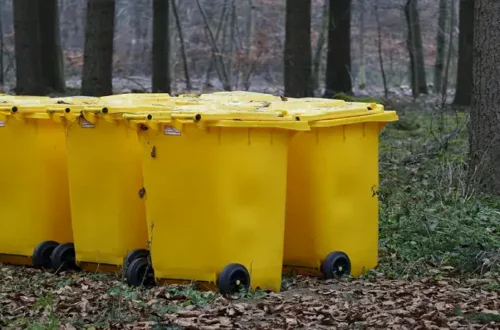In the heart of Texas, businesses face various environmental challenges that threaten their buildings, equipment, and operational continuity. Among these threats, water damage stands as one of the most significant and costly issues, especially for companies that depend on physical infrastructure and valuable resources. Water damage restoration is essential to protecting your Texas business, mitigating losses, and ensuring the long-term sustainability of your investment.
This article will dive deep into the essentials of water damage, its impacts, and the comprehensive steps needed for effective restoration. Here, we emphasize actionable insights for Texas businesses on safeguarding assets, preparing for unforeseen incidents, and optimizing their recovery processes.
Understanding Water Damage Risks for Texas Businesses
Texas’s unique climate and terrain contribute to the risk of water damage. Factors such as seasonal storms, flooding, and aging infrastructure can all result in water intrusion, leading to property damage, equipment loss, and extended downtimes.
Causes of Water Damage in Texas
- Natural Disasters
Hurricanes, thunderstorms, and flash floods are common occurrences in Texas. When these natural events strike, they can inundate commercial buildings with water, causing severe structural and electrical damage. - Plumbing Failures
Broken pipes, leaks, or faulty plumbing systems are leading causes of water damage in commercial properties. Due to the high volume of water that flows through business facilities, a minor leak can escalate into extensive water damage if not quickly addressed. - Roof Leaks and Structural Weaknesses
Texas businesses often contend with roof damage due to heavy winds, hail, and rain. When roofs are compromised, water can seep into the structure, damaging interior walls, ceilings, and equipment. - HVAC and Appliance Malfunctions
Industrial appliances and HVAC systems are essential for Texas businesses, but they are also potential sources of water leaks. Regular maintenance is crucial to prevent leaks that can damage floors, walls, and vital equipment.
The Financial Impact of Water Damage on Texas Businesses
Water damage can lead to enormous financial losses. Repair costs, equipment replacement, and operational downtimes can all strain a business’s resources. Additionally, there are secondary impacts such as mold growth, which can affect indoor air quality and employees’ health. Proactively addressing water damage risks helps to mitigate these costs, allowing businesses to safeguard their assets and productivity.
Steps to Take Immediately After Water Damage
Prompt action is essential for Texas businesses affected by water damage. Following these steps will help minimize damage and facilitate a smoother restoration process.
1. Prioritize Safety
Safety is paramount in any water damage situation. First, assess for electrical hazards, structural damage, or compromised flooring. Turn off electricity to avoid any shock or fire risks, and ensure that any personnel involved in the assessment or cleanup wear protective gear.
2. Contact a Professional Water Damage Restoration Company
Professional restoration services provide specialized tools and expertise to address water damage quickly and efficiently. Restoration experts use advanced equipment, such as industrial vacuums, pumps, and dehumidifiers, to remove water and moisture from affected areas. This step is critical to preventing long-term damage and mold growth.
3. Document the Damage
Thorough documentation is crucial for insurance claims. Take photos and videos of all affected areas, inventory any damaged equipment, and keep records of all actions taken during the restoration process. This documentation will provide essential support when filing insurance claims for damages.
4. Water Extraction and Drying
The first task of any restoration process is to remove standing water. This step involves using high-powered extraction tools to remove as much water as possible. Once standing water is eliminated, industrial fans and dehumidifiers should be employed to dry out the remaining moisture from walls, flooring, and furniture.
5. Identify and Address Mold Risks
Mold can begin to form within 24–48 hours after water exposure. A mold remediation professional will inspect for mold presence, especially in hidden areas like behind walls or under carpeting. Addressing mold early is crucial to prevent it from spreading and affecting air quality.
The Essential Water Damage Restoration Process
A comprehensive water damage restoration process is necessary for Texas businesses to fully recover from a water event. This approach includes assessment, mitigation, structural drying, and final restoration.
1. Damage Assessment and Inspection
The restoration company will conduct a detailed inspection of the property to assess the extent of the damage. Moisture detectors and infrared cameras are used to locate hidden water pockets that may not be immediately visible.
2. Water Removal and Extraction
With high-powered pumps and vacuums, all standing water is extracted from the affected area. This stage prevents water from soaking further into the building materials, reducing the risk of mold growth and long-term structural damage.
3. Dehumidification and Drying
Dehumidification is essential to eliminate moisture trapped within walls, flooring, and other materials. Industrial dehumidifiers and air movers are deployed strategically throughout the property to facilitate quick drying.
4. Cleaning and Sanitizing
After drying, all surfaces and equipment need to be cleaned and sanitized. Water damage often brings contaminants, especially in cases of flooding. Professional cleaners use disinfectants and antimicrobial treatments to sanitize affected areas, ensuring they are safe for employees and customers.
5. Restoration and Repair
This stage involves restoring the property to its original condition. It may include minor repairs like drywall replacement or major reconstructions such as rebuilding damaged areas. Restoration helps businesses get back to full operation as quickly as possible.
Preventative Measures for Texas Businesses
To avoid future water damage, it’s essential to implement preventative measures tailored to the specific risks Texas businesses face.
1. Regular Building Inspections
Schedule regular inspections of plumbing systems, roofing, and structural integrity to identify and address vulnerabilities before they become serious issues. Identifying small leaks or weaknesses can prevent extensive damage and costly repairs down the road.
2. Invest in Flood Barriers and Seals
If your business is located in a flood-prone area, consider installing flood barriers, sandbags, or water-resistant seals around entry points. These preventive steps can help keep water out during storms and reduce potential damage.
3. Backup Important Data and Equipment
Water damage can compromise valuable data and equipment. Store digital backups of essential files, keep critical documents in waterproof containers and elevate equipment off the floor to avoid contact with potential flood water.
4. Create an Emergency Plan
An emergency response plan can prepare your business for unexpected water damage incidents. Include clear steps for shutting off electricity, contacting restoration professionals, and managing evacuations if necessary. Ensure all employees are familiar with the plan and conduct regular drills.
Partnering with an Experienced Restoration Company in Texas
Selecting a reputable water damage restoration company is critical for Texas businesses. Look for companies that specialize in commercial restoration, have experience with local regulations, and possess the necessary certifications, such as IICRC (Institute of Inspection, Cleaning and Restoration Certification).
Benefits of Choosing a Local Restoration Company
- Quick Response Time
Local restoration companies understand the area and can respond promptly to minimize damage. Their proximity allows them to arrive on-site quickly, initiate the restoration process, and help Texas businesses resume operations faster. - Knowledge of Local Challenges
Texas’s climate, infrastructure, and environmental conditions present unique challenges. A local company will be familiar with these risks, offering solutions and preventive measures specific to the region. - Insurance and Regulatory Expertise
A local restoration company will be well-versed in Texas insurance requirements and regulatory codes, ensuring a smooth process from claims to restoration.
The Role of Insurance in Water Damage Restoration
Navigating insurance claims for water damage can be challenging, but it’s essential for maximizing coverage. Understanding the basics of commercial property insurance and taking the right steps during the restoration process will help Texas businesses recover their costs.
What to Know About Insurance for Water Damage
Insurance policies vary widely in terms of coverage. Review your commercial policy to understand what is covered, as many policies have specific clauses for flood damage versus other types of water damage. Working closely with your insurer will streamline the claims process and prevent surprises when filing a claim.
Tips for a Successful Insurance Claim
- Keep Detailed Records
Documentation is key for a successful claim. Keep records of all expenses related to the restoration process, including photographs, repair invoices, and a timeline of events. - Work with a Restoration Company That Offers Claims Assistance
Some restoration companies assist with insurance claims, providing estimates and documentation required by insurers. This support can expedite the claims process, helping you recover costs and restore your business.
Protecting Your Texas Business Against Water Damage
In Texas, businesses face ongoing risks from water damage, but with the right strategies, they can protect their investment, ensure employee safety, and minimize financial loss. From prompt restoration responses to preventative measures and reliable insurance coverage, these steps help Texas businesses remain resilient against water-related threats.
Conclusion
Water damage poses a persistent threat to Texas businesses, impacting everything from building integrity to operational efficiency and profitability. Understanding the causes, financial implications, and essential steps in water damage restoration is crucial for protecting your investment. Immediate action, from contacting professional restoration services to documenting damages for insurance claims, can significantly reduce long-term losses and expedite recovery.
Furthermore, proactive prevention strategies—such as regular inspections, flood barriers, emergency planning, and data backups—are indispensable for minimizing future risks. By partnering with experienced local restoration professionals, Texas businesses can ensure a swift, effective response to water incidents and benefit from specialized knowledge of regional challenges and regulations.
Protecting your business against water damage requires diligence, preparedness, and collaboration with experts. By taking these measures, you can fortify your business against unforeseen water-related events, maintain a safe and productive environment, and focus on what matters most: driving growth and serving your clients.





